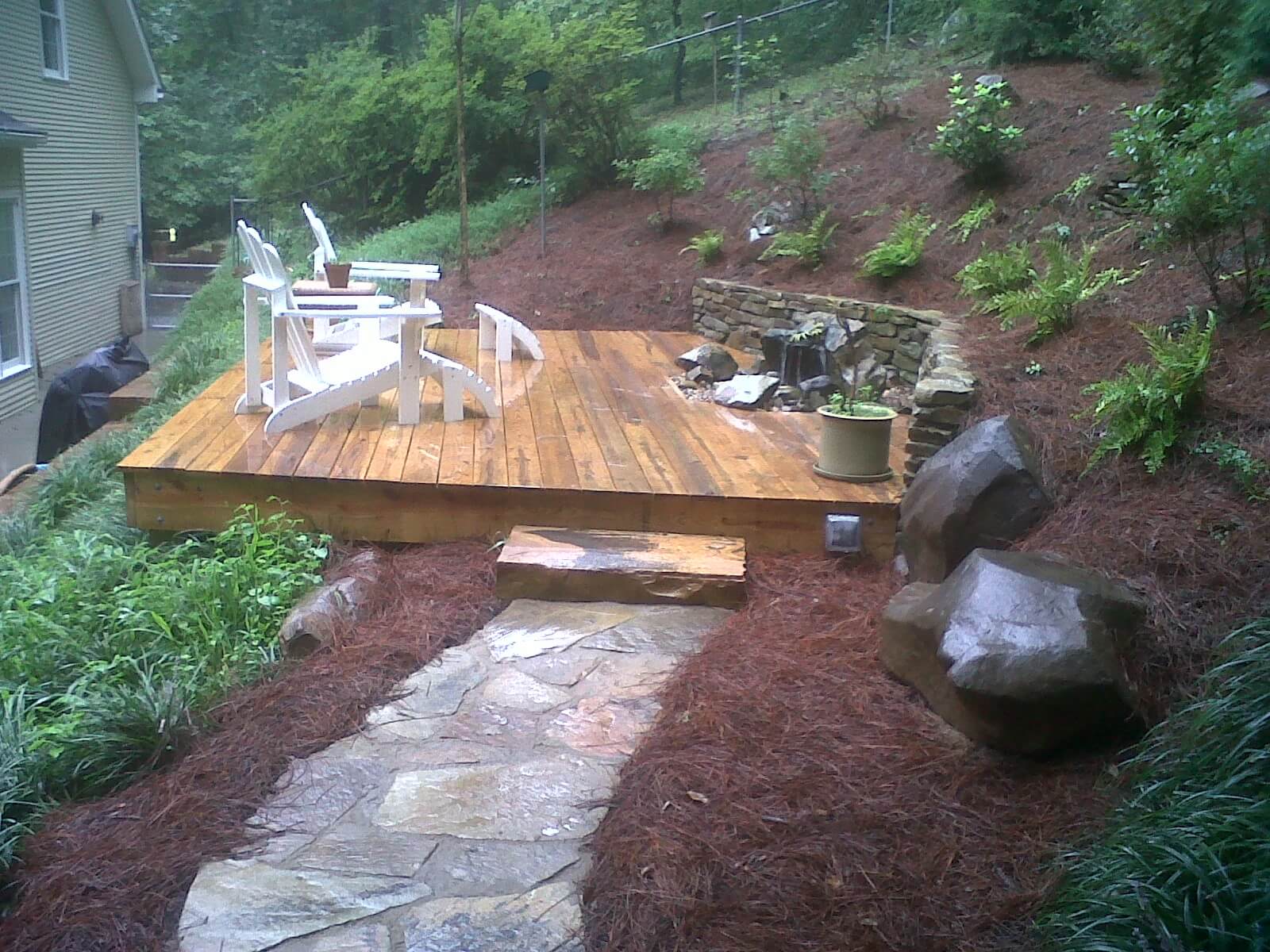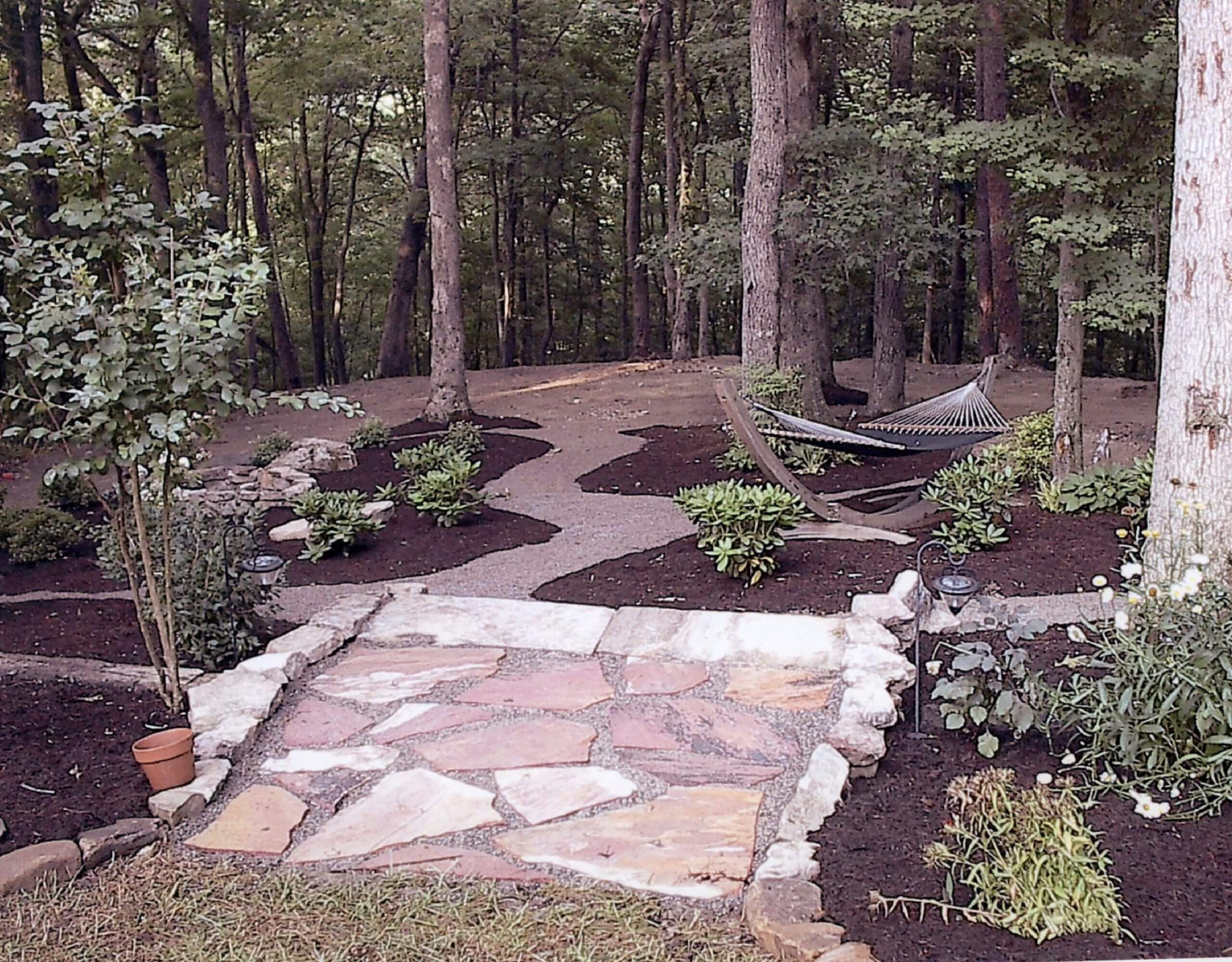Choosing the Right Step Material for Your Outdoor Space
Outdoor steps are more than just a way to move between different levels of your yard. They impact your home’s curb appeal, safety, and maintenance needs. Choosing the right material for your steps is crucial, and with so many options available, it can be overwhelming.
At Willow Ridge Garden Center and Landscaping, we specialize in creating outdoor spaces that are both functional and beautiful. Serving Oak Ridge, TN,
and the surrounding Knoxville area, we help homeowners make informed decisions about their landscape. This guide breaks down the three most popular step materials—composite, wood, and natural stone—so you can find the best fit for your home.
Composite Steps: Modern, Low Maintenance, and Durable
What Are Composite Steps?
Composite steps are made from a mix of recycled wood fibers and plastic. Brands like Trex and TimberTech are popular choices, offering a sleek, uniform look with a variety of colors and finishes.
Pros of Composite Steps
- Long-lasting: Resistant to rot, splintering, and insect damage.
- Low upkeep: No need for staining or sealing; just occasional cleaning.
- Stylish: Available in various colors and smooth finishes to match modern designs.
Cons of Composite Steps
- Artificial look: Lacks the natural charm of wood or stone.
- Heat retention: Can become hot in direct sunlight, making it uncomfortable to walk on barefoot.
- Higher upfront cost: More expensive than wood initially, though savings come from lower maintenance costs.
Best Use Cases for Composite Steps
- Homeowners who want a low-maintenance solution.
- Modern or contemporary landscapes.
- Areas with high foot traffic that need a durable material.
Wood Steps: Classic, Warm, and Budget-Friendly
What Are Wood Steps?
Wood steps, often made from cedar or pressure-treated pine, bring a traditional, warm aesthetic to outdoor spaces. They are widely used in residential landscaping due to their affordability and ease of installation.
Pros of Wood Steps
- Natural beauty: Adds a warm, inviting feel to any outdoor space.
- Easy to work with: Can be cut, shaped, and installed with relative ease.
- Lower initial cost: More affordable than composite or stone.
Cons of Wood Steps
- Requires regular maintenance: Needs staining or sealing to prevent rot and weather damage.
- Prone to wear and tear: Can warp, crack, or suffer from insect damage over time.
- Slippery when wet: If untreated, wood can become hazardous in damp conditions.
Best Use Cases for Wood Steps
- Those looking for a budget-friendly option.
- Traditional and rustic landscape designs.
- Areas where homeowners are willing to perform routine maintenance.
Natural Stone Steps: Elegant, Timeless, and Sturdy
What Are Natural Stone Steps?
Natural stone steps, crafted from materials like flagstone offer unmatched durability and a timeless appearance. They can be used to create striking focal points in outdoor spaces.
Pros of Natural Stone Steps
- Unique and elegant: No two stones are alike, adding character to your landscape.
- Extremely durable: Withstands harsh weather and heavy foot traffic.
- Increases home value: A long-lasting investment that enhances curb appeal.
Cons of Natural Stone Steps
- Heavy and difficult to install: Requires professional expertise for proper placement.
- Higher cost: Material and labor costs are typically greater than wood or composite.
- Can feel cold: Stones retain cold temperatures, which may be uncomfortable in cooler months.
Best Use Cases for Natural Stone Steps
- High-end, luxury landscaping projects.
- Homes with a classic or natural aesthetic.
- Homeowners looking for a long-term investment in durability and beauty.
Comparing Composite, Wood, and Natural Stone Steps: Which One Fits Your Needs?
Cost Breakdown: Initial Investment vs. Long-Term Expenses
- Composite: Higher initial cost but low maintenance.
- Wood: Budget-friendly but requires frequent upkeep.
- Natural Stone: Higher upfront cost but highly durable with minimal long-term costs.
Durability and Weather Resistance
- Composite: Resistant to rot and insects but can fade over time.
- Wood: Susceptible to weather damage and requires maintenance.
- Natural Stone: The most durable option but requires professional installation.
Aesthetic Appeal: Matching Your Landscape Style
- Composite: Best for modern designs with a sleek, uniform look.
- Wood: Works well with rustic or traditional aesthetics.
- Natural Stone: Ideal for classic, high-end, or nature-inspired landscapes.
Installation Complexity and Maintenance Requirements
- Composite: Simple to install, minimal maintenance.
- Wood: Easy to install but requires ongoing care.
- Natural Stone: Difficult installation but long-lasting with little upkeep.
Choosing the Right Material for Your Landscape Design
Choosing the right step material depends on your budget, design preference, and willingness to maintain the steps over time. If you want a low-maintenance option, composite might be your best bet. If you prefer natural warmth and affordability, wood is a great choice. And if you’re looking for durability and elegance, natural stone is hard to beat.
At Willow Ridge Garden Center and Landscaping, we understand that every home is unique, and we take pride in customizing our services to meet your needs. Whether you’re looking for expert advice or full installation services, our team is ready to help. Contact us today at 865-481-3825 or visit us in Oak Ridge, TN, to explore the best options for your outdoor space!


